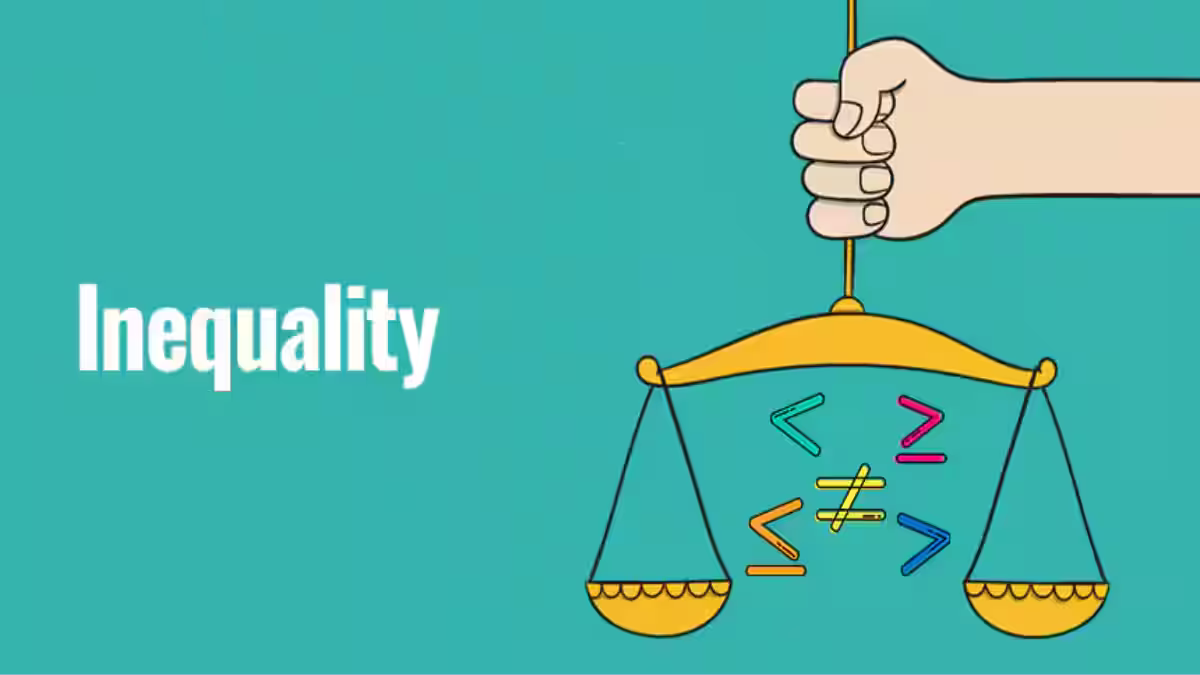Inequality questions are a prominent part of bank and insurance exams, often appearing in the reasoning section. These questions may seem tricky at first, but with the right techniques and consistent practice, beginners can solve them quickly and accurately. Inequalities test logical comparison skills, symbol understanding, and the ability to evaluate relationships between variables. Since these questions rarely require long calculations, they can become one of the easiest scoring areas for aspirants once the basics are clear.
Inequality in Bank Exam
Inequality questions are usually asked in two main formats: Direct Inequality Comparisons and Coded Inequalities. Direct comparisons involve symbols like >, <, ≥, ≤, and =, and require candidates to determine the relationship between two elements.
Coded inequalities use symbols with special meanings assigned through instructions. Understanding both forms thoroughly enables aspirants to handle any pattern introduced in exams. Most bank exam papers include around 4–5 inequality questions, making it a high-accuracy topic for improving overall score.
Basic Symbols Used in Inequality Questions
Knowing these symbols thoroughly helps avoid unnecessary mistakes, especially when symbols are mixed in long statements. Before solving questions, every beginner must be comfortable with the core inequality symbols:
A > B → A is greater than B
A < B → A is smaller than B
A ≥ B → A is greater than or equal to B
A ≤ B → A is smaller than or equal to B
A = B → A is equal to B
Inequality Tricks for Beginners
Inequality questions are a scoring topic for beginners once they understand core symbols, relationship rules, and logical patterns. By using simple techniques such as chain breakdown, directional reading, and contradiction identification, aspirants can solve these questions with speed and accuracy.
1. Left-to-Right and Right-to-Left Reading Trick
One of the simplest tricks beginners can use is reading the relationship between elements in a single direction:
- Read from A to B if A is on the left
- Read from B to A if B is on the right
Example:
A > B ≥ C
To compare A and C, move left to right:
A > B and B ≥ C → so A > C
This technique avoids confusion and speeds up the process of identifying the final relationship.
2. Breaking Long Chains into Smaller Links
When a question has long inequality chains, break them into smaller pairs and combine them:
Example: P > Q = R ≤ S < T, Break it as:
P > Q
Q = R
R ≤ S
S < T
From these, combine step-by-step to derive relationships between any two variables.
This method is extremely helpful for beginners as it prevents misreading long statements.
3. Opposite Sign Trick
If two symbols contradict each other between variables, the relationship is indefinite.
Example: A > B < C
Here:
A > B
C > B
But A and C cannot be compared.
Thus, the relationship between A and C is indefinite.
Beginners must learn to identify such cases instantly.
4. Equal Sign Chain Trick
If A = B = C, then all three are equal and the comparison becomes straightforward.
In combined chains:
A ≥ B = C > D
⇒ A ≥ C and A > D
Simple equality helps reduce complexity.
5. Coded Inequality Quick Decoding
In coded inequality questions, symbols are replaced with letters or alternate symbols. The trick is:
- Decode each symbol one at a time
- Rewrite the statement using actual symbols
- Solve with normal inequality logic
Example:
If A @ B means A ≥ B
If A $ B means A < B
Convert the coded statement accordingly, then solve normally.
This prevents confusion in high-speed exam conditions.
6. Practice the “NO RELATION” Judgment
One of the most important exam skills is quickly identifying when no definite relation exists.
Signs of NO RELATION:
- Symbols flip directions
- Contradicting symbols between same variables
- Disconnected chains
- Marking “No Relation” correctly helps avoid negative marking.
7. Use Mental Visualization Instead of Writing
With practice, candidates should learn to visualize relationships mentally rather than writing every comparison on the rough sheet. This saves time during the exam and improves efficiency.
Daily Practice Method for Fast Improvement for Inequality
Beginners should follow a consistent preparation approach:
- Solve at least 15-20 inequality questions daily
- Practice both direct and coded patterns
- Review mistakes and understand why relationships were indefinite
- Attempt inequality sets from previous year papers and mock tests
- Gradually, the mind becomes trained to interpret symbols quickly.
| Related Posts |
| Basic Concepts of Syllogism with Examples |




 Reasoning Questions for SBI Clerk Mains ...
Reasoning Questions for SBI Clerk Mains ...
 500+ Reasoning Questions PDF for SBI Cle...
500+ Reasoning Questions PDF for SBI Cle...
 600+ Reasoning Questions for IBPS Clerk ...
600+ Reasoning Questions for IBPS Clerk ...








